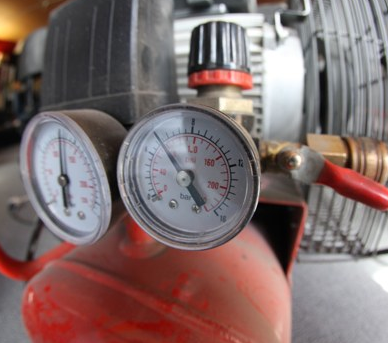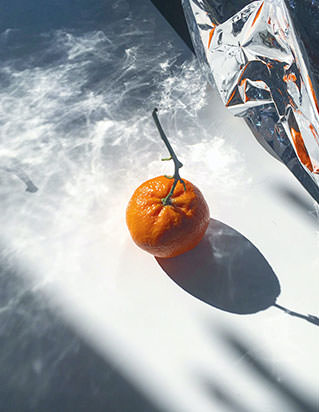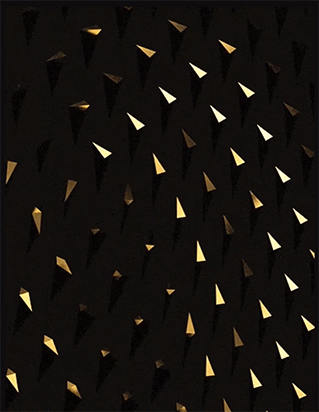Making of HISS and a ROAR PRESSURE SFX Library, by Tim Prebble
[Sound designer and recordist Tim Prebble is releasing “PRESSURE“, a new sound effects library (from his company HISS and a ROAR) loaded with more than 2,700 sounds recorded from different pressure devices. We’ve invited him to talk about the recording process and the creation of this amazing collection]
I really enjoy the process of creating themed sound libraries: as a recordist it engages my lateral thinking, and research can produce surprising sonic relationships, but as a sound designer serendipity can be a very valuable tool. A simple example: the possibility that someone using my new library to create steam/gas releases for a spaceship liftoff is as likely to use a steam train, a domestic pressure cooker or an aerosol can (or all three!) and yet when you consider the range in scale of these props you might think they don’t belong together. But that is one the many joys of sound design: employing disparate sources to create a composite sound that blends and feels real. So my goal with recording this library was to collect as broad a range of pressure generated sounds as possible.
But first a word of warning – when you think of how fragile the diaphragm of a shotgun microphone is, and how a gentle puff of wind or exhalation of breath can overload it, imagine the damage possible via a high pressure jet of air! So before I started recording a single sound for this library I had a very conscious think about what it would cost to replace the mics I would be using. And while I might normally remove the fluffy form my Rycote when recording indoors I sure wouldn’t be this time! But this potential danger was an aspect I kept present at all times, always performing across the front of the mic and never at it.
After I had made my record list for the library I started researching access to sounds and started with the largest: steam trains. Every weekend there are local enthusiasts out driving their trains around and they happily provide public access to them. A quick email and I was off on my first record mission. I am always amazed & hugely appreciative of support from people when it comes to recording sound. Engaging with people is an important part of gaining access and trust, but every recording trip is also a learning experience. The train driver knew to expect me that day, and I enjoyed quizzing him about how the trains are maintained, what the upkeep involves etc… It makes total sense in hindsight but I had never thought about the need for preheating a steam train, and the hours of preparation involved getting it up to full steam.
I always smile when on a record trip & someone asks me “what kind of sounds are you looking for?” – its such a common synaesthetic question, but I smile because the best sounds are often the ones I don’t know I’m looking for. But I explain: “Steam releases of every kind… single chuffs but also prolonged releases…” They explain the best scenarios to capture these and I first record from the exterior, using my Sanken CSS5 on a boom. After three or four short trips away and back I then jump onboard, standing at the front of the carriage immediately behind the engine. And such is their helpful support, they let me fully extend my boom through the rear window of their engine bay, out the front window and through to where the action is.

Sometimes when out recording the public can be a little annoying with questions like “Is this going to be on TV?” but the only problem I ran into on the steam train trip was while recording from the station platform. A kid was playing a game on his cellphone that constantly made beeps and he was completely oblivious to how annoying the sound was. Him and his friends had noticed me recording but didn’t make the connection that he was ruining my recording. After about a minute I got frustrated & asked the rhetorical “Do you have to make that noise???” He apologised and turned it on silent, and in return I let him & his friends have a listen through the headphones as I boomed the top of the steam engine chimney – a small price to pay for peace & quiet!
The next props to be recorded were balloons – I visited a toy shop & bought a few really large balloons as well as normal size party balloons. I think every kid has made those annoying razzy sounds with balloons, but I wanted to see how much variety I could get from such a common accessible prop. I recorded straight releases, then did a sequence of doppler releases – doing variations with the final gasp/blast both on mic and off mic, plus I performed that classic annoying razzy sound when you restrict the shape of the balloon release into a reed. I also tried putting water in the balloon with varying results. As part of a library I realise these are easily accessible sounds for anyone to go record, but as I see it the two benefits of sound libraries are firstly, that someone may provide performances or variations you might not think of and secondly, that if you’re deep in design mode you may not want to stop work & go record something seemingly as banal as a balloon, whereas stumbling across a manipulated wet balloon sound might nail an aspect of the composite sound you’re building…..

I have some interesting neighbours where my studio is in Miramar, Wellington – across the road is Park Road Post (Peter Jackson’s film post facility) and immediately next door is Fuse Circus (Tom, the manager of Fuse Circus performed the whips in my Swish library) but across the carpark is a workshop for WETA Digital, where a good friend of mine works making props for the WETA motion capture department. I’ve borrowed material from him before to record, but this time I hit him up to access his air compressor and the various air tools that work with it.

Again I wasn’t using the device to document it, I was out to extract as many different performances as I could. I started off doing straight blasts of air with the air gun on the right, then tried creating more vocal shriek sounds by squeezing my fingers together and forcing air between them, and then firing it into a water bottle. I also recorded a series of unplugging the air gun from the hose, which creates a short sharp air pop release.
Next I recorded the staple gun, first free standing, then against wood and a few different metal objects. Last I did the air drill, which made that classic sound heard in garages when removing the nuts that hold a wheel on. I did as many pitch and speed variations as I could muster from it, and then went back to the air gun and experimented with pushing low pressure air through the collection of pipes that I have. By holding the trigger at a fixed position I could achieve a steady state ‘air through pipe’ sound that had interesting resonance, and which I figure could be very useful in creating ambiences (especially science fiction!)

One problem with recording the small compressor was that once the pressure in its air container fell below a certain pressure, its motor would kick in and I could hear it through the wall, so I’d have to stop recording & wait for it re-pressurise. I mentioned this when I was mixing at Park Road Post one day and one of the mixers said they had industrial compressed air distributed through the film lab and it wouldn’t suffer from this problem. So I did another compressed air record session in the workshop there, and with an unlimited supply of air discovered a few new techniques, almost generating wooshes & slow dopplers by sweeping the air gun across long pieces of wood. After recording for half an hour or so this weird rhythmic pulse started up. I asked what it was & we went though to the film lab, where a pump was emptying chemicals from a tank. Of course I recorded it too, although not for the pressure library:
Next on my record list was truck air brakes. Its funny how your attention can be altered by what you’re are working on – I suddenly noticed whenever I was driving around town just how often you hear air brakes from trucks and buses. I contacted a friend & we went & recorded a couple of trucks that he had access to – I laughed out loud at the number plate of one of the trucks:

Its a double play on words – OBW1 is the obvious Star wars reference, but the truck is also used for Outside Broadcasts, hence the OB part.

The remainder of the props on my record list were all studio based, although I didn’t realise quite how messy and/or stinky some of them would be! I remember my mother used to cook with a domestic pressure cooker but all the modern ones I could find had automatic pressure control, so I ended up borrowing an old school pressure cooker from a friend & set it up on a hot plate in my studio. After about ten minutes it had built up serious pressure and I could manually perform phrases of steam releases…

Now for the messy! I bought a small fire extinguisher before we did the Fireworks recording a few months ago, but had never used it so I figured I’d record it for the library. I also picked up a larger one and they both produced great sounds but coated my entire recording space in nasty dust that repeatedly clogged my vaccum cleaner when attempting to remove it.

And the stinky? I bought a few aerosol spray cans at the supermarket: an air freshener, a dust spray and a couple of paint cans. I couldn’t test the cans at the supermarket but I lucked in, with one of the cans sounding like some kind of death ray (or maybe I was lacking oxygen by this point!) I also bought a box of soda cans at the supermarket, and waited until late at night & recorded them outside my studio by shaking them up & then opening them, with sugary water spraying everywhere! Its odd the techniques you learn through doing such things but after exhausting all the variations I could create via normal means, I suddenly thought what would happen if I stabbed the shaken up can with a screw driver! I recorded the rest of the box of cans using this technique and managed by the end to do multiple controlled sprays from each can.
The last studio based sounds I recorded were vocal – I was always imrpessed with the wooshes a friend made using his voice as the core element, so I did a session emulating steam releases with my breath, and then did a series of ramps starting from nothing & building to a peak with a sudden stop. All great material for manipulation!

The last prop I thought of to record was paintball guns – my oldest nephew got a paintball gun & mask for Christmas last year and I was impressed how powerful they are – I sure wouldn’t want to get hit by one! So I contacted a local paintball company (who provide a great rural environment for group outings/work bonding sessions etc) and I went and did a session, recording the two models of paintball guns as single shots, shots with no a paintball in them, and then variations shooting through a number of pipes.

PRESSURE has been a diverse collection of sounds to record, and its very satisfying skipping through all of the sounds comparing them, with the knowledge of the range and scale of props involved and appreciating their individual sonic character.
More info: HISS and a ROAR | Exclusive Q&A with Tim Prebble at Designing Sound
Comments (3)
-
tim prebble
November 23, 2010Hey Colin,
no damage, thanks to being a little paranoid – I had to wash my fluffy though!







Colin Hunter
November 23, 2010Fascinating insight into what goes into developing a library such as this. Greta stuff!
Did you actually have any equipment damage in the end?